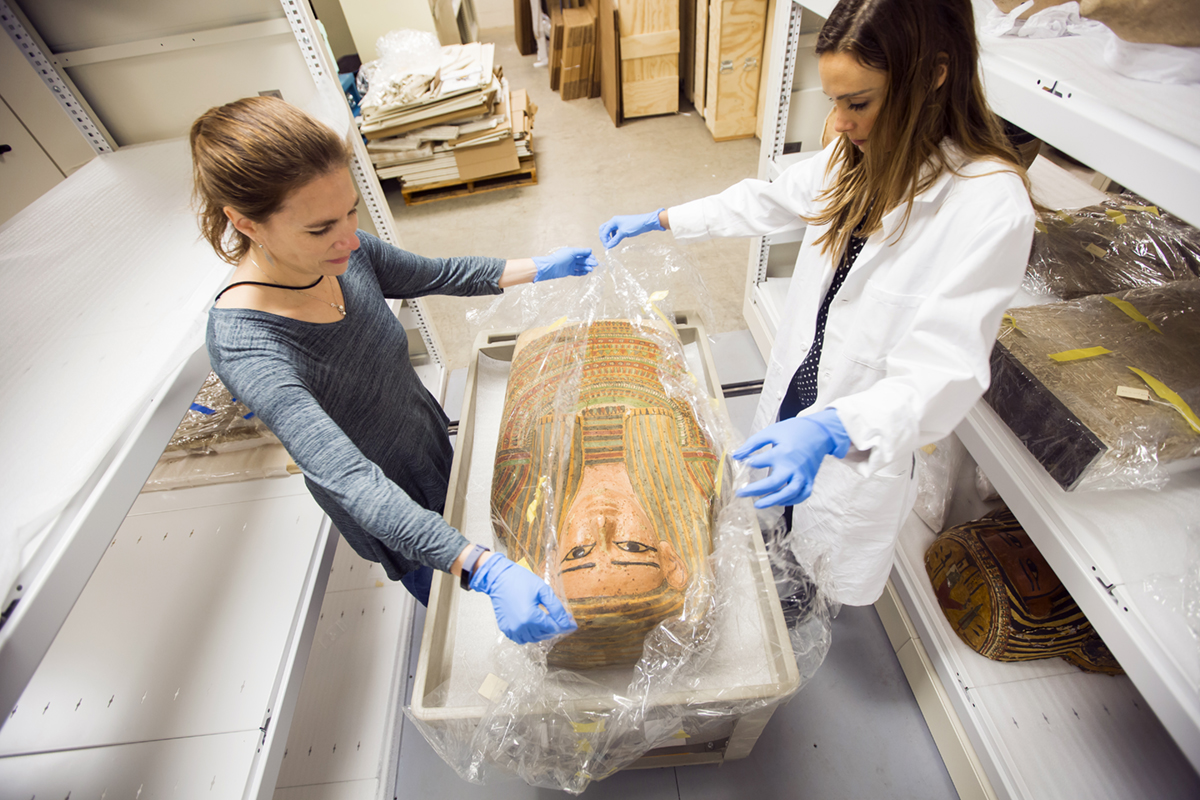Ancient Art Finds a New Home
Senusret Collection arrives at the Carlos Museum

Named after a workmen’s village Hetep- Senusret in Fayum, Egypt—home to laborers on the pyramid of pharaoh Senusret II—the Senusret Collection includes coffins with mummies, gilded funerary masks, finely crafted bronze statuettes of deities, exquisite New Kingdom relief stele, Attic Greek pottery, ancient gold jewelry, and a collection of glassware from the same period. With more than 1,500 objects, the collection offers a near-unparalleled window onto the ancient world.
Thanks to a centennial gift from the Georges Ricard Foundation, the Senusret Collection, one of the most extensive collections of ancient Egyptian and Near Eastern objects ever donated to a US museum has found a home at Emory’s Michael C. Carlos Museum, where it will serve as a resource not only for university faculty and students but also for schoolchildren in the Atlanta community.
The Senusret Collection was assembled by French industrialist Georges Ricard in the 1970s and opened to great fanfare as the Museum of Egypt and the Ancient World in Monaco. Within a few years, however, the museum closed due to conservation concerns, and the Ricard family brought the collection with them when they moved to California in the 1980s. Georges Ricard and his son Yann have shared it online since 1997 as the Virtual Egyptian Museum.
“We never intended or imagined the Senusret Collection would leave California, but once we met the Carlos Museum staff, the unthinkable turned into the compelling,” Yann Ricard says. “Nowhere else could we find such a cohesive, dedicated, and creative team of consummate professionals on a mission not only to preserve our world’s cultural heritage, but also to use collections to ignite imaginations, convey meaning, elicit emotion, and inspire reflection.”





